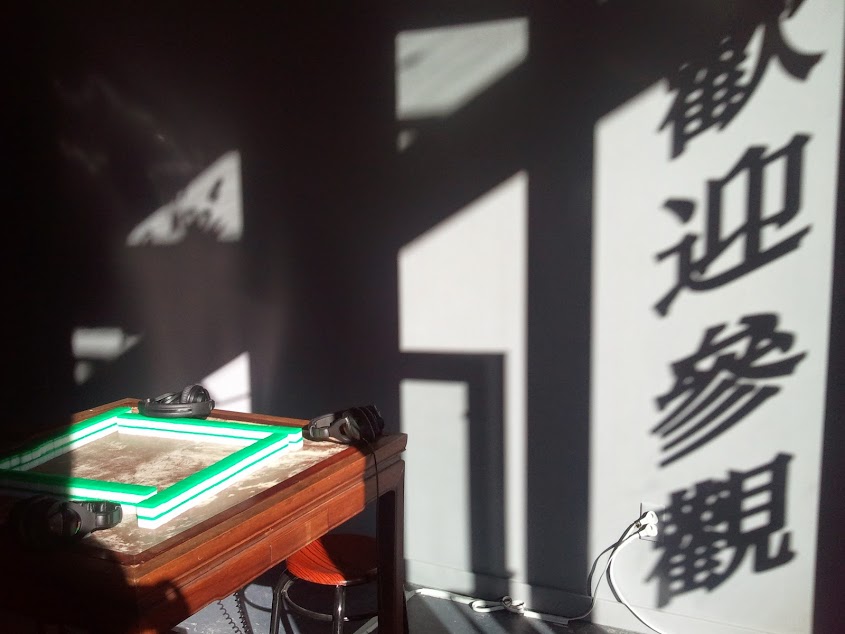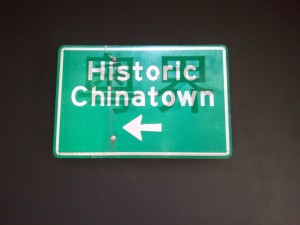“Hope is in the questions people ask”: Language and Identity in the Cantosphere
A bright green road sign that reads “Historic Chinatown” welcomes you to the exhibit, while the words 越界 and 粤界 flicker over the sign. Cantonese speakers will recognize 越界 as “transgression”: 越 connotes moving, climbing, and surpassing, while 界 means “world.” 粤界 is less recognizable, but has been translated as “Cantosphere.” A chance encounter with one of the artists, Zoe Lam, allowed her to explain: 粤界 represents Hong Kong, Vancouver, and Guangzhou, separate geographical locations that share a linguistic and cultural identity. Implicit is the idea that successful language acquisition can transcend the alienation of diaspora and that shared languages mean shared cultural values and identities. Most importantly, a Cantosphere includes diasporic Cantonese speakers into larger conversations about language politics. What happens when federal policies obstruct the teaching of Cantonese in Hong Kong, but Cantonese acquisition overseas is complicated by a lack of cultural context, as well as by postcolonial structures that prioritize English? What happens to cultural identity when language fragments or fails to transfer?
These questions frame Centre A’s current exhibit, 越界/粤界 (TRANSGRESSION/CANTOSPHERE), a multimedia collaboration between arts company Hong Kong Exile, linguist Zoe Lam, and artist Howie Tsui. The artists attempt to interrogate several major ideas: the Mandarinisation and the gentrification of Vancouver’s Chinatown, language policies and universal suffrage in Hong Kong, as well as diasporic identities and cultural fetishisation. In the entryway sits a fully set mahjong table, each setting given headphones through which a Cantonese teacher patiently explains the proper tones to a sheepish student. “We want people to sit down and play,” explains Lam. “We want people to have conversations and build communities.” Excerpts from the City of Vancouver’s “Chinatown Economic Revitalization Strategy” circle the room, where a different kind of community building is prescribed: modernise, economise, and monetise.
越界/粤界 most successfully engages with questions of language and identity. The main exhibit features a projection of a Cantonese idiom, narrated by a mechanical voice. The voice rereads the sentence with one key character replaced by successive homophones, often with humorous or subversive results: “I want genuine universal suffrage” becomes “I want genuine universal garlic”; “change begins with disobedience” becomes “change is similar to disobedience.” During a specific sentence, the homophone pulses and a distorted rumbling fills the room. The disfigured idiom is extracted and creates a larger narrative about the Umbrella Revolution. This disintegration and reconstruction highlights how failures in translation—even in something as basic as tonal variation—can break meaning and even subvert dominant narratives. Mahjong re-enters the exhibit when the idiom is scrambled to the sound of clattering tiles, emphasising the disjointedness of Cantonese, where characters can only find meaning in relation to other characters and phrases.
When individual characters are isolated, altered, and reintroduced, the larger narrative changes. A broader parallel can be found in the way members of the Cantosphere emigrate, form diasporic identities, and return to complicate larger conversations of language and identity in the Cantosphere.
Works Cited
Lam, Zoe. Personal interview. 28 Feb. 2015.


